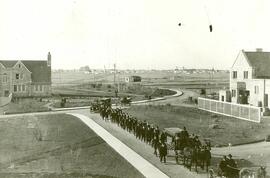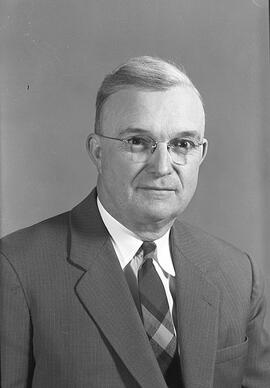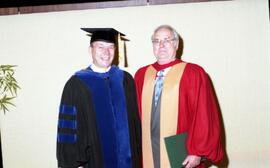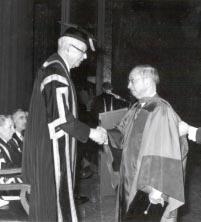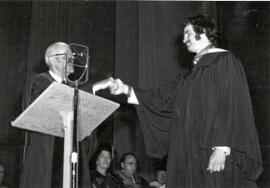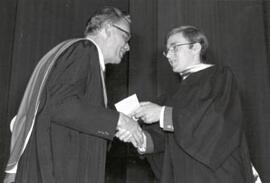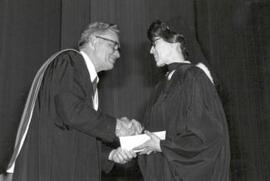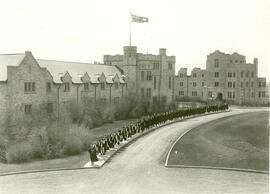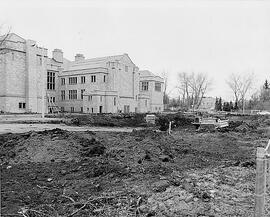William Hamilton - Funeral Procession
- A-5709
- Item
- Nov. 1918
Three images of the funeral procession of William Hamilton, who died while working as a volunteer nurse in the temporary hospital the City had set up at Emmanuel College during the Spanish Influenza Pandemic.
Photos A, B, C: Procession on campus; Dean of Agriculture's Residence at left, Saskatchewan Hall at right.
Photos D and E show a funeral procession [held around the same time as William Hamilton's; perhaps in Eastern Canada].
Photo D: Pallbearers carry a casket down a residential street. Marchers, women and men, walk behind.
Photo E: Procession on a residential street; marchers walking away from camera. People standing at far right.
Bio/Historical Note: William George Hamilton, Pharmacy student and widower with three children, contracted the Spanish Flu and died after serving as a volunteer nurse. Hamilton died 15 November 1918, at age 39. Hamilton’s wife, Mabel Isabelle (Coxworth) Hamilton, died on 28 March 1917, age 21. They are buried at Fairmede Cemetery, Wawota, Saskatchewan.



